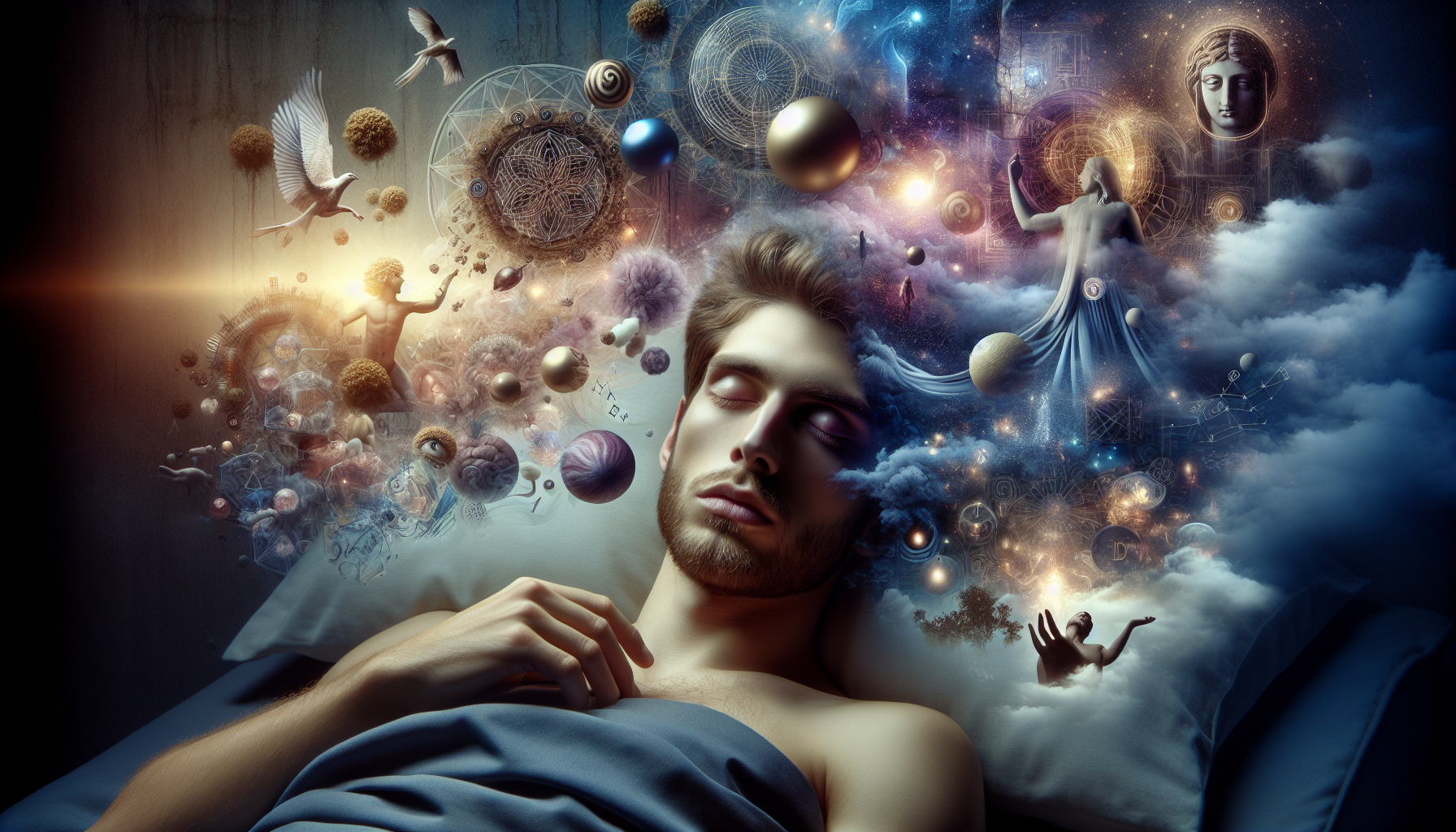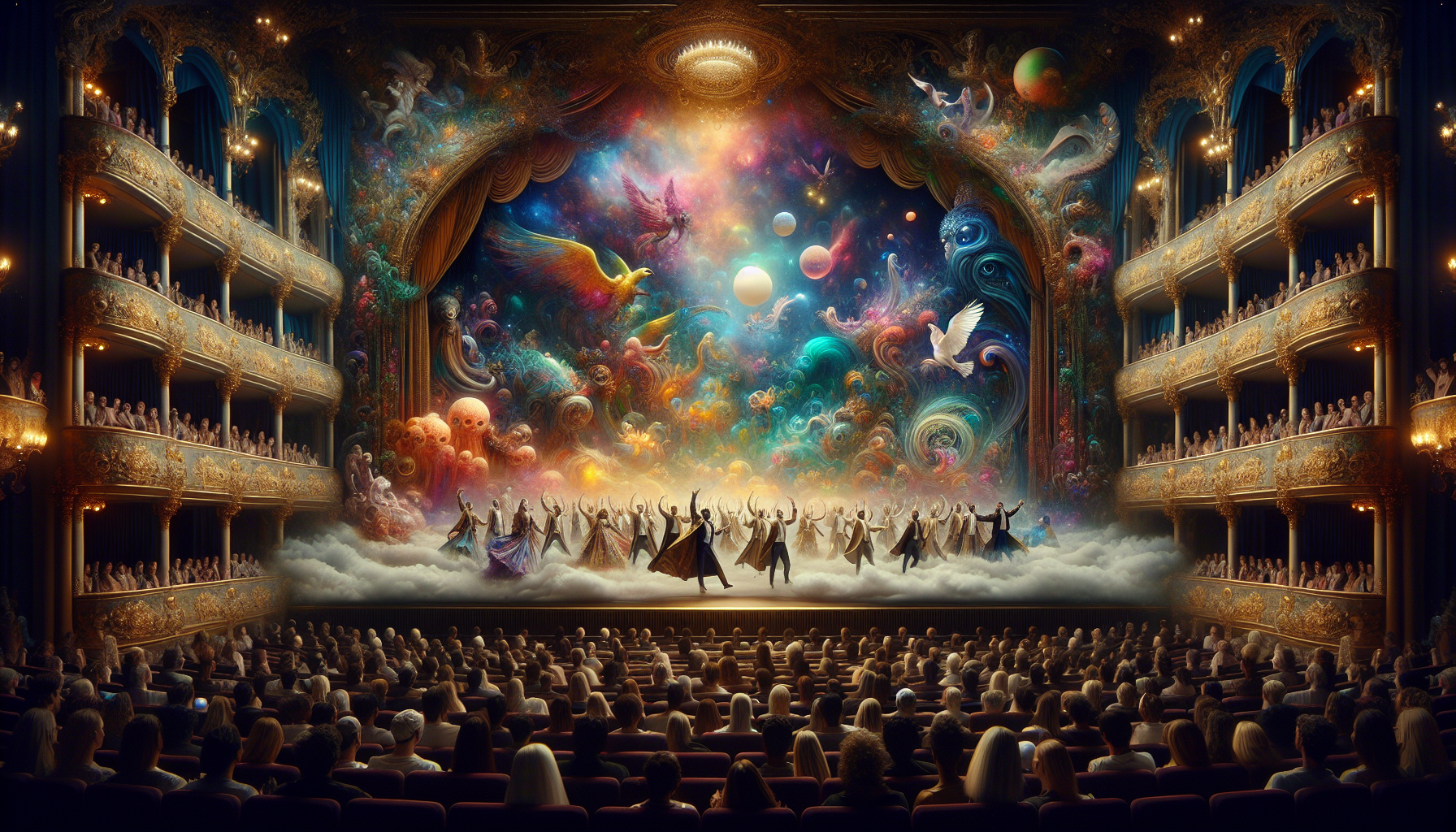In the hushed moments between midnight and dawn, when the world is draped in a shroud of tranquility, our minds embark on an enigmatic journey that has captivated humankind for centuries. Dreams, those fleeting tapestries of imagination and memory, weave together a fascinating tapestry that reveals the deepest recesses of our subconscious. They are the silent narrators of our fears, desires, and aspirations, playing out scenarios as vividly as any blockbuster film, yet with the ephemeral nature of morning mist. But what are these nocturnal narratives trying to tell us? What secrets do they hold, and how can we unlock the mysteries hidden within their illusory embrace?
Delving into the psychology of dreams is akin to peering into the soul’s mirror, a reflective exploration that offers profound insights into the human psyche. From the symbolic interpretations proposed by Freud to the archetypal themes identified by Jung, the study of dreams has provided a fertile ground for psychological theories and therapeutic practices. Yet, despite centuries of exploration, the true essence and purpose of dreams remain an alluring enigma. Are they mere fragments of our daily experiences, or do they serve a deeper, evolutionary purpose? This article aims to unravel these questions by exploring the captivating world of dream psychology, shedding light on what makes certain dreams unforgettable and the impact they have on our waking lives.
Throughout this exploration, we will journey through the rich landscape of dream research, drawing upon the latest scientific findings and historical perspectives. We will uncover the various types of dreams, from the mundane to the mystical, and examine how they influence our emotions, creativity, and problem-solving abilities. With the advent of modern technology, neuroscientists have begun to map the intricate pathways of the dreaming brain, offering unprecedented insights into the mechanisms that drive our nighttime visions. We will also delve into the cultural and historical significance of dreams, exploring how different societies have interpreted and valued these nocturnal experiences throughout history. Whether it’s the prophetic dreams of ancient civilizations or the symbolic interpretations of contemporary psychoanalysis, dreams have always held a mirror to the collective consciousness of humanity.
As we peel back the layers of this intriguing topic, you will discover practical ways to harness the power of your own dreams. From techniques to improve dream recall to methods for inducing lucid dreaming, we will equip you with the tools to engage more deeply with your inner dreamscape. Through personal anecdotes and expert insights, this article will not only illuminate the mysteries of unforgettable dreams but also inspire you to embark on your own journey of self-discovery. So, fasten your seatbelt and prepare to dive into the mesmerizing world of dreams, where reality blurs with imagination, and the secrets of the subconscious await to be unveiled. 💤✨
The Mysterious World of Dreams: An Introduction
Dreams have fascinated humans for centuries. They are a window into our subconscious, a place where our deepest fears and desires can manifest in ways that are both surreal and enlightening. Understanding the psychology behind dreams can unlock secrets about our minds that are otherwise hidden in the waking world. This exploration into the fascinating psychology of unforgettable dreams will delve into what dreams mean, how they affect us, and why some dreams stay with us long after we’ve awoken.
Dreams occur during the rapid eye movement (REM) stage of sleep, which is when brain activity is at its highest, almost resembling the activity when we are awake. This stage of sleep is crucial for cognitive functions such as memory consolidation, learning, and emotional regulation. The dreams we experience during REM sleep can be vivid and immersive, often feeling as real as life itself. This raises questions about the nature of reality and the power of our minds to create entire worlds within our dreams. For instance, have you ever awoken from a dream feeling as though you just lived through a significant event? This phenomenon is part of what makes the study of dreams so intriguing.
Moreover, dreams can serve as a reflection of our innermost thoughts and emotions. Sigmund Freud, the father of psychoanalysis, famously suggested that dreams are a form of wish fulfillment, allowing us to explore desires that we might repress in our waking lives. Carl Jung, on the other hand, believed that dreams are a means of communicating with our unconscious and play a vital role in personal development. This dual perspective highlights the complex and multifaceted nature of dreams, making them a rich subject for psychological study.
Theories and Interpretations: Unveiling the Meaning Behind Dreams
The interpretation of dreams has been a subject of intrigue and speculation for centuries. Various theories have been proposed to explain why we dream and what our dreams signify. Let’s explore some of the prominent theories in dream psychology.
One popular theory is the Activation-Synthesis Model proposed by J. Allan Hobson and Robert McCarley in 1977. This model suggests that dreams are the result of the brain’s attempt to make sense of random neural activity during sleep. According to this theory, dreams do not have inherent meaning but are simply the brain’s way of weaving a narrative out of chaotic signals. This perspective challenges the idea that dreams are deeply symbolic or purposeful.
Another well-known theory is Freud’s psychoanalytic approach, which posits that dreams are expressions of our deepest desires and anxieties. Freud believed that dreams are a “royal road to the unconscious,” providing valuable insight into our hidden motives. He emphasized the symbolic nature of dreams, where objects and scenarios represent repressed thoughts and desires. This theory has been influential in psychoanalysis and continues to be a topic of discussion in modern psychology.
In contrast, Carl Jung offered a different perspective with his theory of the collective unconscious. Jung argued that dreams are not just personal expressions but also connect us to universal themes and archetypes shared across humanity. According to Jung, dreams serve as a bridge between our conscious selves and the collective unconscious, offering insights into both individual and shared experiences.
To further explore these theories, watch the following insightful video: Understanding Dreams: The Psychology of Dreams and Dream Interpretation – Psych2Go.
Unforgettable Dreams: Why Some Stay With Us
Have you ever wondered why some dreams linger in your memory while others fade away as soon as you wake up? The psychology behind unforgettable dreams can be attributed to several factors, including emotional intensity, narrative structure, and personal relevance.
Dreams that evoke strong emotions, such as fear, joy, or sadness, are more likely to be remembered. This is because emotions play a crucial role in memory consolidation. When a dream triggers a powerful emotional response, it becomes more deeply embedded in our memory, making it more likely to be recalled later. For example, a dream about reuniting with a long-lost friend or escaping a dangerous situation can leave a lasting impression due to the intensity of the emotions involved.
The narrative structure of a dream also contributes to its memorability. Dreams that have a coherent storyline or follow a logical sequence are easier to recall than fragmented or disjointed ones. A well-structured dream can feel like a mini-movie, complete with characters, settings, and a plot. These elements create a sense of familiarity and coherence, enhancing the likelihood of the dream being remembered.
Personal relevance is another key factor in dream recall. Dreams that relate to our personal experiences, concerns, or aspirations tend to stick with us longer. For instance, a dream about an upcoming job interview or a significant life event can resonate with our waking life, making it more memorable. Similarly, dreams that reflect our fears or desires can have a lasting impact because they touch on aspects of our identity and emotional landscape.
Analyzing Dream Content: Common Themes and Symbols
Dreams often feature recurring themes and symbols that hold significance across different cultures and individuals. These common elements can provide insight into the underlying messages of our dreams and help us better understand our subconscious mind.
One prevalent theme in dreams is the experience of flying or falling. Flying dreams are often associated with feelings of freedom, empowerment, and transcendence. They can represent a desire to rise above challenges or explore new possibilities. Falling dreams, on the other hand, are typically linked to feelings of insecurity or loss of control. They may reflect anxieties about failure or a fear of losing one’s footing in life.
Another common theme is the presence of water, which can symbolize emotions, the unconscious mind, and transformation. Calm, clear water often signifies tranquility and emotional clarity, while turbulent or murky water may indicate emotional turmoil or unresolved issues. The way water appears in dreams can provide valuable clues about our emotional state and inner conflicts.
Animals are also frequent symbols in dreams, each carrying its own unique meaning. For example, snakes are often associated with transformation and healing, as well as danger and deceit. Birds can symbolize freedom, spirituality, or communication. The specific animal and its behavior in the dream can offer insight into our instincts, desires, and fears.
The interpretation of dream symbols can vary based on personal and cultural context. While some symbols may hold universal meanings, others may have unique significance to the dreamer. To delve deeper into dream symbolism, explore the following table of common dream symbols and their interpretations:
| Symbol | Possible Interpretation |
|---|---|
| Flying | Freedom, empowerment, new perspectives |
| Falling | Insecurity, loss of control, fear of failure |
| Water | Emotions, transformation, the unconscious |
| Snakes | Transformation, healing, danger |
| Birds | Freedom, spirituality, communication |
The Role of Dreams in Personal Growth and Healing
Dreams can serve as powerful tools for personal growth and healing. By providing a window into our subconscious, they offer opportunities for self-reflection and emotional processing. Understanding and interpreting our dreams can lead to profound insights and positive changes in our waking lives.
One way dreams facilitate personal growth is by highlighting unresolved issues or emotional conflicts. Dreams can bring to the surface thoughts and feelings that we may not be fully aware of or ready to confront. By paying attention to these dreams, we can gain a better understanding of our inner struggles and take steps toward resolution and healing.
Moreover, dreams can inspire creativity and problem-solving. Many artists, writers, and inventors have drawn inspiration from their dreams, using them as a source of ideas and innovation. The unique and often surreal nature of dreams allows us to think outside the box and explore new possibilities, leading to creative breakthroughs and solutions.
Dreams can also play a therapeutic role in emotional healing. They provide a safe space for processing difficult emotions and experiences, allowing us to work through trauma or grief in a symbolic and indirect way. Engaging with our dreams can help us release emotional tension and find a sense of closure and peace.
Exploring the Science Behind Dreams: Recent Research and Findings
In recent years, scientific advancements have shed new light on the mechanisms and functions of dreams. Through cutting-edge research, scientists have uncovered fascinating insights into the nature of dreams and their impact on our minds and bodies.
One area of research focuses on the role of dreams in memory consolidation. Studies have shown that dreaming during REM sleep plays a crucial role in processing and storing memories. During this stage, the brain replays and integrates new information, strengthening neural connections and enhancing learning and recall. This process is believed to help us make sense of our experiences and prepare for future challenges.
Another intriguing finding is the relationship between dreams and emotional regulation. Research suggests that dreaming serves as a form of emotional processing, allowing us to work through unresolved emotions and experiences. By simulating emotional scenarios, dreams can help us practice coping strategies and develop resilience. This may explain why dreams often feature emotionally charged content and why they can have a lasting impact on our mood and well-being.
Recent studies have also explored the phenomenon of lucid dreaming, where individuals become aware that they are dreaming and can actively participate in the dream. Lucid dreaming has been associated with increased creativity, problem-solving abilities, and emotional regulation. It offers a unique opportunity to explore the subconscious mind and experiment with different scenarios and possibilities.
For a deeper understanding of the science behind dreams, watch the following video: The Science of Dreams – TED-Ed.
Conclusion
As we reach the end of our exploration into the intriguing world of dreams, it’s essential to reflect on the key insights we’ve uncovered about the fascinating psychology behind unforgettable dreams. Our journey began by delving into the basic understanding of what dreams are and why they occur. From the REM (Rapid Eye Movement) phase, where most vivid dreaming takes place, to the non-REM stages, each part of the sleep cycle plays a crucial role in the narratives our minds create. We have learned that dreams are not just random neural firings but meaningful expressions of our subconscious, reflecting our emotions, desires, and unresolved conflicts.
One of the significant points highlighted in our discussion was the various theories surrounding the purpose of dreams. Sigmund Freud’s perspective on dreams being the royal road to the unconscious offered an introspective look at how dreams reveal our innermost thoughts. Carl Jung expanded this by introducing the concept of archetypes, suggesting that dreams connect us to the collective unconscious and universal symbols. Modern theories, such as the Activation-Synthesis Hypothesis and the Threat Simulation Theory, provided a more scientific angle, proposing that dreams are a way for the brain to process information, solve problems, and prepare for future challenges.
Furthermore, we explored how dreams can impact our waking lives. Unforgettable dreams often leave a lasting impression, influencing our emotions, creativity, and even decision-making processes. Lucid dreaming, in particular, offers an exciting opportunity for self-exploration and mastery over our dreamscapes. By becoming aware that we are dreaming, we can consciously interact with our dreams, potentially leading to increased self-awareness and personal growth.
The importance of understanding dreams extends beyond personal introspection. In therapeutic settings, dream analysis can provide valuable insights into a person’s mental state and assist in addressing psychological issues. Therapists often use dreams to help clients uncover hidden emotions and traumas, facilitating healing and self-discovery.
In acknowledging the cultural significance of dreams, we discovered that dreams have been a source of inspiration and guidance across different societies and eras. From ancient civilizations viewing dreams as messages from the divine to contemporary cultures recognizing their potential for creative problem-solving, dreams continue to be a powerful element of human experience.
As we conclude, it is crucial to emphasize the relevance of this topic in our everyday lives. By understanding the psychology of dreams, we gain a deeper appreciation for the complexity of the human mind and the mysteries it holds. Dreams offer a unique window into our subconscious, providing valuable insights that can enhance our emotional well-being and personal development.
I encourage you, dear reader, to reflect on your own dreams and consider what they might be telling you. Keep a dream journal to capture recurring themes and emotions, and explore the potential meanings behind them. Sharing your experiences and insights can also be beneficial, sparking engaging discussions and deeper understanding among peers. 🌙
Feel free to comment on this article with your thoughts and interpretations of your dreams. Your experiences might resonate with others and contribute to a broader dialogue on this fascinating subject. Additionally, sharing this article with friends and family can help spread awareness about the intriguing world of dreams and the psychology behind them.
For those interested in further exploration, I recommend checking out additional resources and research studies to expand your knowledge on this topic. Websites such as and National Sleep Foundation offer valuable information on sleep and dreaming.
In conclusion, the study of dreams is a captivating field that bridges the gap between science and mystery. By unlocking the secrets of our dreams, we not only enrich our understanding of the human psyche but also open the door to personal growth and emotional healing. So, embrace the wonders of your dreams, for they hold the keys to your subconscious mind and the potential for a more fulfilled and insightful life. 🌟

Toni Santos is a visual storyteller and dream archivist whose work explores the delicate boundary between memory and imagination. Through layered visuals and symbolic design, Toni captures the fleeting essence of dreams — those strange, beautiful, and sometimes haunting fragments that drift through sleep and linger in waking thought.
His creative journey is rooted in a deep fascination with the subconscious and the imagery it conjures. From half-remembered landscapes to recurring symbols and surreal encounters, each piece Toni brings to life becomes a portal into the inner archive — where time distorts, meanings shift, and personal mythology takes form.
With a background in handcrafted artistry and visual composition, Toni merges intuition with intention. His work doesn’t just depict dreams; it preserves them, translating ephemeral moments into tangible expressions that evoke emotion, curiosity, and quiet revelation. Each visual is both a record and an invitation to explore the rich terrain of inner life.
As the guiding voice behind Vizovex, Toni offers illustrated dream journals, symbolic studies, and visual essays that help others connect with the poetic structure of their own subconscious landscapes. His art becomes a mirror — not just of what we see at night, but of what we carry deep within.
His work is a tribute to:
The fragile beauty of forgotten dreams
The language of symbols in the subconscious mind
The inner worlds we visit but rarely name
Whether you’re a lucid dreamer, a seeker of hidden meanings, or someone fascinated by the mystery of sleep-born stories, Toni welcomes you to step into a space where dreams are not lost — they are archived, one vision, one sketch, one silent narrative at a time.





